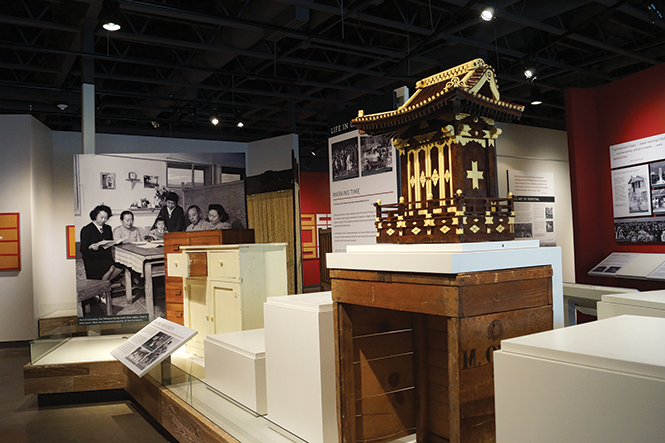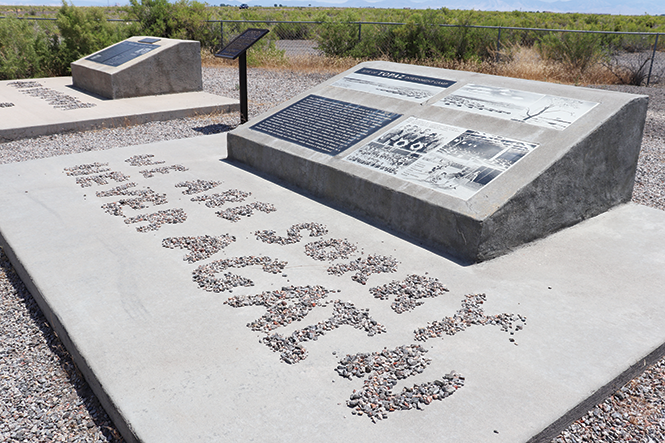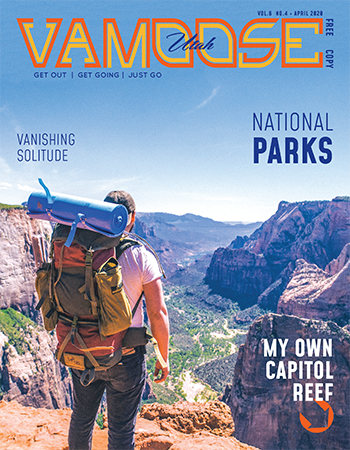Learning the hard lessons of Topaz
by Rebecca Chavez-Houck
Exploring our state gives us the chance to reflect on human experiences that intertwine with history. One such place is the Topaz Museum (55 W. Main St., Delta, 435-864-2514, TopazMuseum.org), as well as the site of the nearby Central Utah Relocation Center (Topaz Internment Camp).
Open daily (except Sundays and holidays) from 10 a.m. to 5 p.m., the museum provides poignant and comprehensive exhibits filled with artifacts, story and art that lend a voice to the people who were brought to Topaz as part of President Franklin D. Roosevelt’s Executive Order 9066. It forced individuals of Japanese descent from their homes against their will, relocating them in internment camps throughout the United States.
The internment of Americans of Japanese ancestry during WWII was one of the worst violations of civil rights against citizens in the history of the United States. The government and the U.S. Army, falsely citing ‘military necessity,’ removed 120,000 men, women and children of Japanese ancestry—about two-thirds were American citizens—from their homes on the West Coast and forced them into 10 remote camps controlled by the War Relocation Administration (WRA).
— TopazMuseum.org
The not-to-be-missed museum is well worth a trip to Delta. It’s also a great stop if you’re traveling U.S. Route 50 en route to Great Basin National Park.
We were fortunate to be guided by museum director Jane Beckwith, who was a driving force in establishing the museum and preserving the site. Beginning in 1910, Beckwith’s grandfather, Frank A. Beckwith, and then subsequently, her father, Frank S. Beckwith, were publishers of the local newspaper, the Millard County Chronicle, so recounting the time and places of the community is a legacy she takes very seriously. Without photos and other documentation, it would be hard to imagine what 42 blocks of barracks surrounded by barbed wire and guard towers looked like. The museum brings to life internee stories and shows how they persevered, despite what the U.S. government did to them.
Plan to spend a minimum of two hours at the museum and watch the two short films about Topaz before exploring the exhibits. These chronicle what precipitated the executive order and how families coped. A searchable database gives information about all of the internees that’s comprehensive and eye-opening. Your walk through the museum concludes with information about court cases and changes in policy that followed as a result of this dark time in our nation’s history.

Internees were supplied with cots, mattresses and blankets. All furniture pieces, including this Butsudan, were made at Topaz from scrap wood
Sad Reminders
The Topaz camp—located between 10000 to 11000 West and 4500 North in Delta—is a National Historic Landmark. It officially opened on Sept.11, 1942, and closed on Oct. 31, 1945. Some 11,000 Japanese Americans were brought to Topaz, making it Utah’s fifth largest city at the time. It was named after nearby Topaz Mountain.
To see the actual relocation center site, we recommend a visit to the museum first as it provides helpful context plus informational flyers to guide you.
You can arrange for a docent-led drive out to the internment site if you contact the museum in advance. While the site does have signage that you can read for yourself, the docents can point out interesting elements that you’d likely not spot otherwise. Beckwith showed my husband, Martin, and me (and a group of Weber State University students who caravanned with us) where barracks were located that housed not only families but schools, mess halls, latrines, recreation halls and churches. You can see monuments, building foundations, roads and walkways, agricultural buildings, perimeter fencing and landscaping. She pointed out small artifacts that remain at the site: a button, a piece of porcelain, charred coal from the pot-belled stoves that warmed the barracks.
Visiting the relocation center highlights the isolation and challenges that the internees faced: the extreme heat of the summers, the cold of Utah winters, and the dust that pervaded every nook and cranny.

A marker at Topaz Internment Camp
Travel Tips
In order to arrive at the museum when it opened, we spent the preceding night at the Antelope Valley RV Park (776 W. U.S. 6/50, Delta, 435-864-1813, AntelopeValleyRVPark.com). With full hookups, a laundry facility and showers, this RV park is well landscaped and situated by a large alfalfa field (Delta is known for its high-quality alfalfa). We enjoyed a beautiful sunset there before calling it a night.
The most direct route to Delta is to take Interstate 15 from Salt Lake south to Nephi (Exit 225), then travel west on State Route 132 to where it connects with U.S. 50, which takes you into Delta. However, we followed a less-traveled route out of Salt Lake County, traveling State Route 68 (Redwood Road in Salt Lake County) south along the west side of Utah Lake. The lakeside scenery and view of the Wasatch Range along this route are breathtaking. SR-68 ends at U.S. 6, which we traveled southwest as it snaked through Eureka (another great historical stop) and past the turnoff to Little Sahara Recreation Area (approximately 23 miles south of Eureka on U.S. 6, 435-433-5960, BLM.gov), another possible camping option close to Delta. Little Sahara offers primitive campgrounds, but those with RVs should know that navigating the sandy sites can be problematic, so it’s best to thoroughly research the area before attempting to access the campground.
For a more primitive camping experience, consider the Oak Creek Campground (about 18 miles east of Delta, 1-877-444-6777, FS.USDA.gov) located within the Fishlake National Forest. To get here, travel east out of Delta on U.S. 50 until it becomes State Route 125. Starting at Oak City, travel east on Center Street 4 ¼ miles to the campground.
Before we set up camp in Delta, we grabbed a burger at the Ashton Burger Barn (304 N. U.S. 6, Delta, 435-864-2288), with numerous burger options and a wide array of meat cuts in their butcher shop (including rattlesnake and rabbit sausage that my husband couldn’t help but bring home. I told him they were all for him!).
For breakfast the next morning, we stopped for biscuits and gravy at the Rancher Motel & Café (171 W. Main, Delta, 435-864-2741)—all reasonably priced diner fare—and then walked one block east to the museum.
The ghosts of Utah’s past are not always departed souls who lived here long ago. Ghosts can also be phantoms of harmful decisions we’ve made as a society. We are haunted by the notion that our leaders can be driven by fear to oppress or hurt others for no other reason than they are a different race, nationality, creed, sexual orientation, etc. A visit to Topaz brings to light how fear can manifest to the detriment of all. It’s something we need to remember to avoid going down this same road now and in the future.



